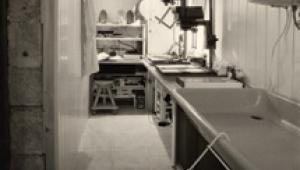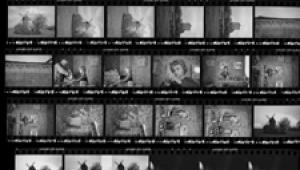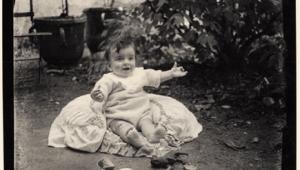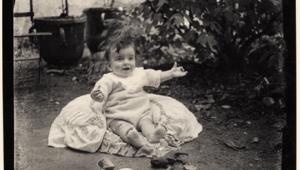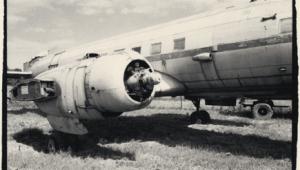The Darkroom
Aligning Enlargers For Better Prints
| Good optical alignment is extremely important. If your enlarger is not in proper alignment, you will not be able to produce prints that are sharply focused. Of course, if most of your printing is done with a soft-focus diffuser, maybe it doesn't matter. And, if most of your printing is done in black and white at relatively small magnifications, it probably doesn't matter, either. But, as you make larger magnifications, you will have to open the lens aperture more and more. As the opening increases, the depth of focus decreases. So, there is less room in which to keep all four corners of the print in focus at the same time. You might be more familiar with this principal from working with your camera. As you open the aperture of the lens, you are also reducing the depth of field. Which means that you must be more careful to focus accurately on the subject. Because the orange mask in color negative films absorbs a lot of the illumination from the enlarger, there is a tendency to use larger lens apertures. If the enlarger is in correct alignment, you will be able to open the lens aperture fairly wide and still focus across the entire plane of the image very sharply. It all depends on how accurate the alignment is. Many less expensive enlargers are aligned at the factory when they are manufactured. There is little or no provision for the user to make any further adjustments. This is too bad, since routine wear and tear is bound to alter any mechanical device. It only takes a few thousandths of an inch of misalignment to start producing prints with one or more corners a little out of focus. Most 4x5 enlargers are considered professional grade equipment. They will have provisions for the user to make an adjustment when it is needed. I would recommend that you check the alignment of your enlarger about every six months, depending on how much you use it. There are various test targets that are commercially available for testing an enlarger's alignment. But, they all tend to be a bit expensive. You should be able to make a perfectly good one by taking a piece of exposed (and processed) film and scratching some lines in its emulsion. Then, make an 8x10 print using your newly made test target. If you try making a smaller print, you might not be able to clearly distinguish subtle amounts of misalignment. When making the test target, use a very sharp straight pin or needle. Scratch tiny lines in the emulsion on all four corners and in the middle. Be sure the lines are very thin and delicate. Otherwise, you won't be able to tell if they are truly in sharp focus later when you make a test print. Use your newly made test target to make an 8x10 print. Open the lens wide-open, and with a grain focuser, focus as sharply as possible on the scratches that are in the center of the film--not the ones on the corners. Don't even bother to look at the corner scratches. With the lens wide-open, adjust the time of the exposure, until your print is a mild, delicate mid tone of density. That should allow your scratches to show up nicely. If you set the density too dark, the scratches will be burned in too much and you will not be able to see subtle focus differences. And, of course, if the density is too light, you simply won't be able to see anything. When you examine the test print, the scratches in the center should be nice and sharp. After all, that was where you focused using your grain focuser. Now, examine the scratches on the four corners of the print. They should all be equally slightly out of focus. That is a normal condition with the lens wide-open. If one corner is more or less out of focus than the others, you have a misalignment in the enlarger. It does no good to stop the lens down for this test. As you stop the lens down, the test pattern will always come into sharper focus regardless of the alignment of the enlarger, because you are creating an increase in the depth of focus. The test must be performed with the lens wide-open. If your enlarger is out of alignment and you want to fix it, you will need an alignment tool. There are many on the market. Most are difficult to use and not very accurate. I prefer the one made by Focal Point Industries, Inc. of Sanford, Florida. It is called LaserAlign and sells for a little under $300. It uses a thin, red, laser beam and allows you to work with the room lights on. Its claim to fame is that it is almost idiot proof, and very accurate. You can easily use it even if you wear glasses and your eyesight is poor. It is super easy to use with all brands of enlargers. The LaserAlign sends a thin laser beam straight up from the easel. A front surface mirror is placed in the negative carrier and the lens is removed. The laser beam bounces off the mirror and is reflected back down to the LaserAlign device. If the negative carrier is in proper alignment with the easel, the reflected laser beam will strike the LaserAlign at the output port where it came from. However, if the negative carrier is not in perfect alignment with the easel, then the reflected laser beam will strike the round, white, target area that surrounds the output port. You then adjust the negative carrier until the laser beam strikes the output port. Next, you replace the lens in the enlarger, and using a couple of rubber bands, affix the front surface mirror to the front of the lens. Again, the laser beam will strike the mirror and be reflected back to the LaserAlign device. It will be easy to see if the lens is in alignment, and make any corrections that might be needed. LaserAlign comes with the front surface mirrors, full instructions and even the rubber bands that are used to attach one of the mirrors to the front of the lens. The device will work with any brand of enlarger. Of course, you will have to consult your enlarger's Owners Manual to find out where the nuts and bolts are located that control the adjustments. Every different brand and model is slightly different. If you are using a Beseler enlarger, I can probably offer a little help if you are having difficulty. I'm fairly familiar with the Beseler product line. For more information, contact Focal Point Industries, Inc., 2867 Stonewall Pl. #101, Sanford, FL 32773; (407) 322-2123; fax: (407) 322-2186; www.fpointinc.com. If you have any questions about aligning your enlarger, you can e-mail me at: editorial@shutterbug.net |
